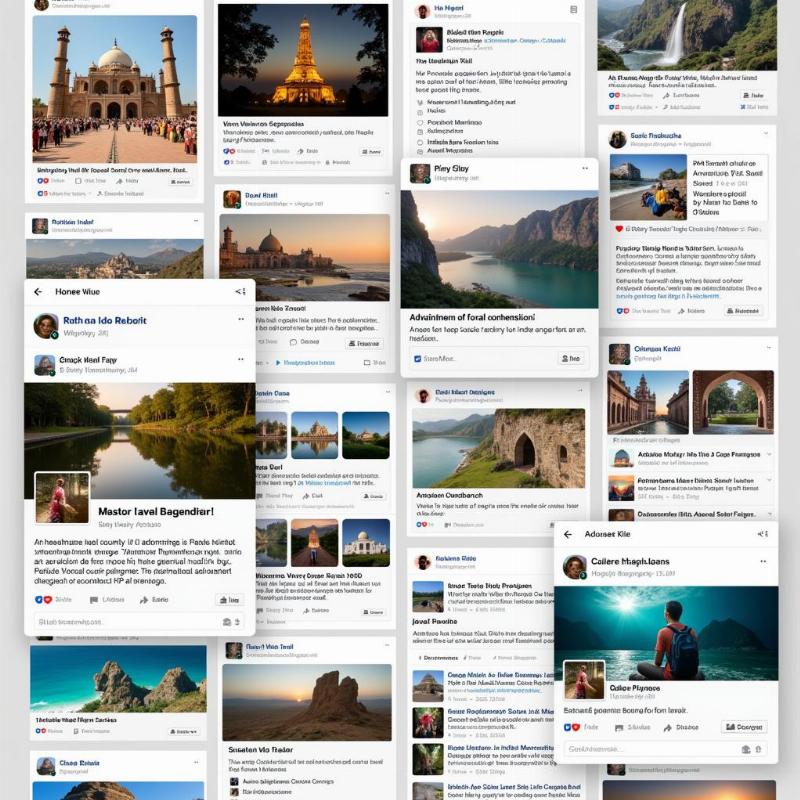India’s National Tourism Policy 2002 aimed to position the country as a global tourism hotspot. It recognized tourism’s potential for economic growth, employment generation, and cultural exchange. The policy focused on sustainable tourism development, infrastructure improvements, and marketing strategies to attract both domestic and international tourists. This article delves into the key aspects of the 2002 policy, exploring its impact and relevance in shaping India’s tourism landscape.
Key Objectives of the National Tourism Policy 2002
The 2002 policy had several core objectives. It sought to increase India’s share in the global tourism market, create employment opportunities, particularly in rural areas, and preserve India’s rich cultural and natural heritage. The policy also emphasized private sector participation and streamlining regulatory processes to facilitate investment in the tourism sector. Furthermore, it aimed to develop tourism infrastructure, including accommodation, transportation, and entertainment facilities.
Focus on Sustainable Tourism Development
A crucial aspect of the National Tourism Policy 2002 was its emphasis on sustainable tourism. It promoted responsible tourism practices that minimize negative environmental impacts and maximize benefits for local communities. The policy encouraged eco-tourism initiatives, preserving natural resources and cultural heritage for future generations.
How did the policy promote sustainable practices?
The policy promoted sustainable practices by encouraging the adoption of eco-friendly technologies in hotels and resorts, promoting local handicrafts and cultural performances, and educating tourists about responsible travel behavior.
Impact of the National Tourism Policy 2002
The National Tourism Policy 2002 played a significant role in shaping India’s tourism sector. It led to increased tourist arrivals, both domestic and international, and spurred investment in tourism infrastructure. The policy also helped in creating employment opportunities and promoting rural tourism. However, challenges remained in terms of implementation and addressing issues like infrastructure gaps and uneven regional development.
What were the challenges faced in implementing the 2002 policy?
Some of the key challenges included bureaucratic hurdles, lack of coordination between different stakeholders, and inadequate funding for certain projects. Addressing these challenges required a collaborative approach involving government agencies, private sector players, and local communities.
Looking Ahead: Post-2002 Developments
Since 2002, India’s tourism policy has continued to evolve, adapting to changing global trends and domestic needs. The focus has shifted towards promoting niche tourism segments like medical tourism, adventure tourism, and spiritual tourism. Digital marketing and online platforms have become crucial in reaching out to potential tourists worldwide.
How has technology influenced India’s tourism promotion?
The use of social media, online travel agencies, and virtual tours has significantly enhanced India’s tourism promotion efforts. These platforms allow for targeted marketing, personalized recommendations, and seamless booking experiences.
 Digital Marketing Strategies for Tourism in India
Digital Marketing Strategies for Tourism in India
Conclusion
The National Tourism Policy 2002 laid the foundation for India’s modern tourism sector. It recognized tourism’s potential as a driver of economic growth and cultural exchange. While the policy had its limitations, it paved the way for future developments and continues to influence India’s tourism landscape. The ongoing focus on sustainable tourism, infrastructure development, and innovative marketing strategies will be crucial in realizing India’s full potential as a global tourism destination.
FAQ
- What was the main aim of the National Tourism Policy 2002? To establish India as a prominent player in the global tourism market and leverage tourism for economic development and cultural preservation.
- How did the 2002 policy address sustainable tourism? It promoted eco-tourism, responsible travel practices, and the preservation of natural and cultural heritage.
- What were the major challenges faced in implementing the policy? Bureaucratic hurdles, lack of coordination between stakeholders, and inadequate funding for certain projects were key challenges.
- How has India’s tourism policy evolved since 2002? The focus has shifted towards niche tourism segments and digital marketing strategies.
- What is the current focus of India’s tourism promotion efforts? Sustainable tourism, infrastructure development, and innovative marketing strategies are the current priorities.
PlaTovi: Your Gateway to Incredible India
PlaTovi is your one-stop solution for all your travel needs in India. We offer a wide range of services, from customized tour packages and hotel bookings to flight reservations and visa assistance. Whether you’re looking to explore ancient temples, relax on pristine beaches, or embark on an adventurous trek in the Himalayas, PlaTovi can help you plan the perfect Indian getaway. Contact us today to start planning your dream vacation! Email: [email protected], Phone: +91 22-2517-3581.